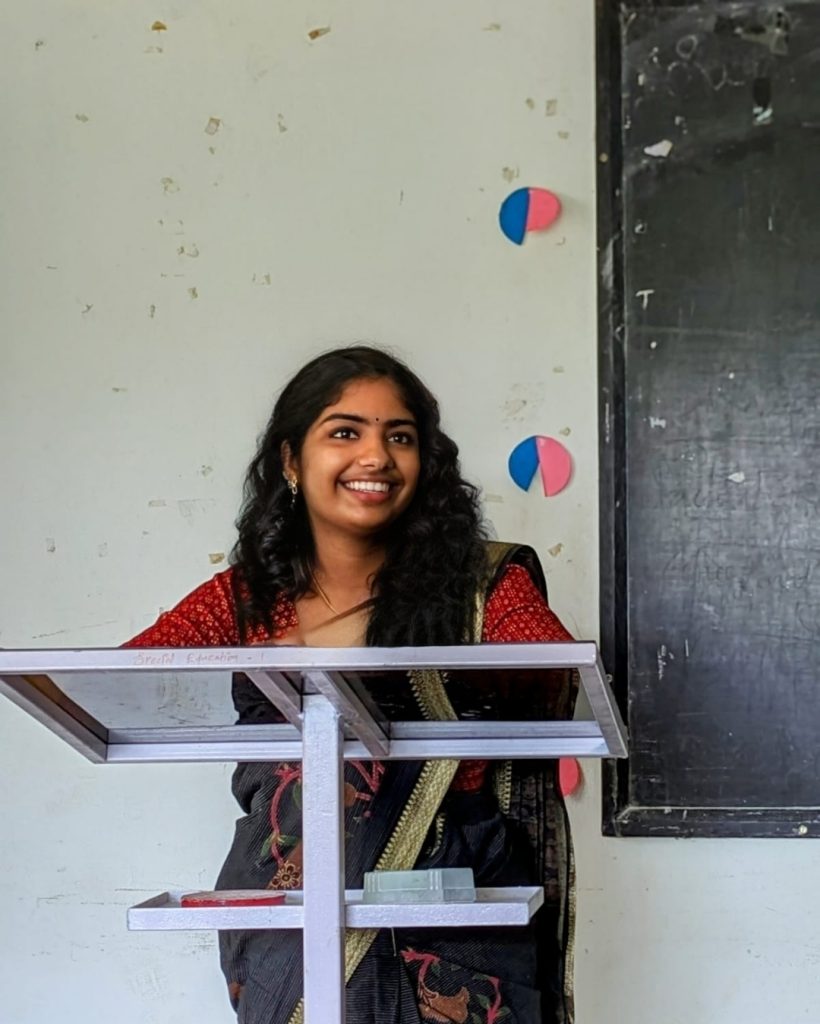
Written by
Athira. M.K
Special Educator
Imagine a classroom where hearing loss no longer limits curiosity, understanding, or connection. For children with hearing impairments (HI), learning thrives best when it is visual and experiential. Since they rely less on sound, they engage deeply through sight, movement, and interaction. Research shows that visual learning significantly boosts comprehension and retention for HI learners, making it essential to create classrooms that can truly be seen, touched, and experienced.
Want to create a more inclusive classroom? Here’s how visual learning can transform your teaching.
How Visual Tools Unlock Learning for HI Students
Images, diagrams, and infographics help simplify and clarify complex topics. For example, color-coded science charts, visual timelines, and labeled diagrams enable students to grasp key ideas instantly.
- Attractive visuals and icons support memory and help children recall ideas faster.
- Step-by-step illustrated guides make multi-step processes easy to follow.
- Flashcards and digital picture cards strengthen vocabulary and conceptual understanding.
- Color coding separates important themes, from grammar cues to math operations.
Many digital tools now enable educators to create such visually rich presentations and activity sheets tailored specifically for HI learners.
Videos and Animations
- Captioned videos (using high-contrast backgrounds and easy-to-read fonts) ensure comprehension.
- Animated explanations convey meaning through motion and imagery rather than sound.
- Sign language overlays enhance accessibility and comprehension.
- Replayable videos allow learners to review lessons at their own pace.
- Interactive videos encourage learners to answer questions or drag visual elements as they learn.
Interactive Digital Platforms
Interactive tools transform learning into an engaging and collaborative experience.
- Click-and-learn games, digital flashcards, and quizzes keep students active participants.
- Visual-text lesson combinations improve comprehension and recall.
- Drag-and-drop activities make abstract concepts more hands-on.
- Instant visual feedback allows students to identify and correct mistakes immediately.
User-friendly digital platforms encourage HI students to explore content, interact with learning materials, and develop greater independence.
Building Social & Emotional Confidence
Inclusive education is not just about academics—it also nurtures emotional well-being. HI learners often face challenges with communication and inclusion within mainstream classrooms.
- Peer buddy systems promote collaboration, communication, and social bonding.
- Group activities based on visual communication reduce barriers and encourage participation.
- Creative expression activities like drawing, storyboards, and visual presentations help students communicate ideas and emotions.
- Celebrating achievements visually with badges, charts, and visual recognition motivates learners and reinforces positive behavior.
- Mindfulness and social-emotional exercises help HI learners develop confidence and manage stress in learning environments.
Support for Teachers and Families
- Teacher training on visual education, captioning tools, and sign-supported instruction builds inclusive teaching capacities.
- Guidance for families—including home activity sheets, visual flashcards, and educational apps—extends learning beyond the classroom.
- Communication aids, including gesture-based or sign-supported exchanges, encourage stronger teacher-student connections.
How Technology Bridges the Hearing Gap
Technology plays a pivotal role in making hybrid education accessible.
- AI-powered captioning creates real-time subtitles in lessons conducted via common platforms like Zoom or Google Meet.
- Bluetooth-enabled hearing aids connect directly to digital devices for clearer listening experiences.
- Online whiteboards and visual collaboration tools help students follow what teachers illustrate in real time.
A Teacher’s Perspective
During my time teaching second-grade students, I had the privilege of working with two hearing-impaired children. To teach them a short story, I used flashcards, colorful charts, and YouTube videos. Although the students were enthusiastic, sourcing and switching between multiple tools was both time-consuming and costly. Depending entirely on a mobile phone or YouTube often disrupted focus and consistency.
Today, with devices like the VergeTAB, a Digital Activity Book and platforms such as XceptionalLEARNING, all these learning materials—videos, charts, flashcards, interactive activities—can be found in one place. Teaching and assessment become smoother, efficient, and visually immersive, ensuring every child participates meaningfully.
The Future: Learning That Can Be Seen and Experienced
When visual learning tools and inclusive technology come together, children with hearing impairments gain independence, confidence, and joy in learning. They can see their lessons unfold, engage actively, and thrive in hybrid classrooms that respect their individuality.
“Hearing loss is not a limitation—it’s simply a different way of learning.” By reimagining classrooms through the eyes of HI learners, we create a future where learning is inclusive, connected, and full of endless possibilities.
XceptionalLEARNING is dedicated to making every HI learner’s journey brighter by blending visual tools, innovative technology, empowered teachers, and supportive families—ensuring that no child is left behind in the hybrid classrooms of tomorrow.
Through visual learning opportunities, accessible technology, and collaborative support systems, XceptionalLEARNING helps HI children thrive with confidence and curiosity. When learning becomes more visual, inclusive, and engaging, the future of every child with hearing impairments shines with endless possibilities.
At XceptionalLEARNING, our Hybrid Therapy Services and Inclusive Learning Solutions empower hearing-impaired learners to progress through visual and engaging methods. Connect with our Licensed Therapists Online or Contact us today to experience truly inclusive hybrid education.

